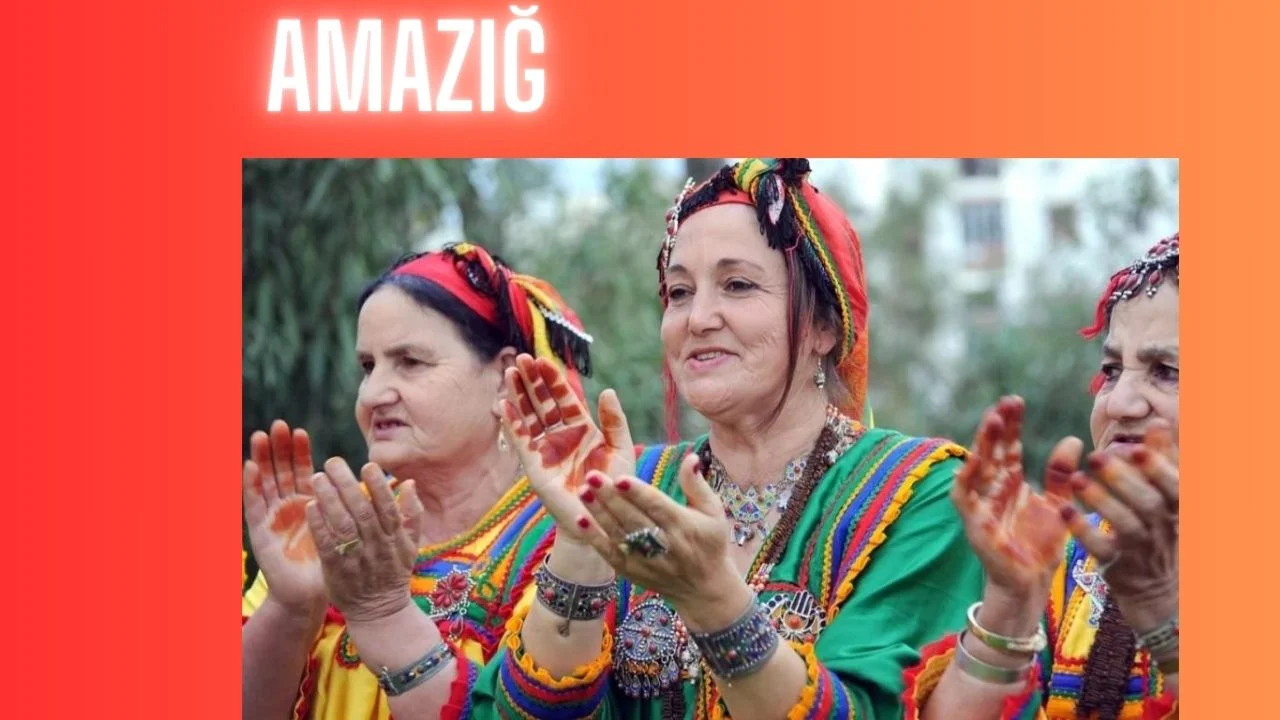The Amaziğ(also known as Berbers) are one of the most ancient and culturally rich indigenous groups of North Africa. Their history, traditions, and influence date back thousands of years, spanning across countries such as Morocco, Algeria, Tunisia, Libya, and even parts of the Sahara Desert. Despite being overshadowed by other dominant cultures in North Africa, the Amaziğ people have maintained a unique identity that continues to thrive today.
This article will explore the origins, language, culture, and modern-day presence of the , shedding light on their contributions to the region’s diverse heritage.
Who Are the Amaziğ?
The term Amaziğ (pronounced ah-MAH-zigh) means “free people” or “noble people” in their native language. Often referred to as Berbers by outsiders, the Amazigh consider this term a colonial label imposed upon them by the Romans. Historically, the Amazigh have lived as nomads, farmers, and traders, establishing themselves across the vast landscapes of North Africa.
Their identity is closely tied to their language, , and their rich traditions, which have been passed down through oral history, art, and customs for millennia.
Ancient Origins of the Amaziğ People
The Amaziğ are believed to be the original inhabitants of North Africa, with archaeological evidence suggesting their presence in the region as far back as 10,000 years ago. They established numerous ancient kingdoms, with Numidia and Mauretania being among the most famous. These kingdoms interacted with major powers such as the Romans, Phoenicians, and Egyptians, influencing the cultural and political landscape of the Mediterranean.
One of the most notable Amaziğ figures from ancient history is Queen Dihya, also known as Kahina, a warrior queen who resisted Arab expansion in North Africa during the 7th century.
The Amaziğ Language: Tamazight
The Amaziğ language, known as Tamazight, is part of the Afroasiatic language family and is considered one of the oldest languages in the world. Tamazight has numerous dialects, which vary depending on the region, but they all share the same ancient script called Tifinagh. This script dates back to the ancient Libyco-Berber inscriptions.
Today, efforts have been made to revive and promote Tamazight, especially in Morocco and Algeria, where it has been recognized as an official language. The preservation of Tamazight is seen as a key part of preserving Amaziğ identity in the face of globalization and the dominance of other languages like Arabic and French in the region.
The Tifinagh Script
The Tifinagh script is an ancient writing system used by the Amaziğ people, consisting of a series of geometric shapes and symbols. Although its origins remain somewhat mysterious, Tifinagh is believed to have been used for centuries to record oral traditions, communicate through carvings, and even mark tombs.
Today, the script has been revitalized as a symbol of Amaziğ pride, and you can see it displayed on flags, monuments, and in modern publications.
Amaziğ Culture and Traditions
The Amaziğ culture is rich with vibrant traditions, music, art, and a deep connection to nature. Despite centuries of foreign influence and occupation, the Amazigh have managed to preserve much of their traditional way of life.
Music and Dance
Amaziğ music plays a central role in their cultural expression. Traditional instruments like the gimbri (a type of lute), bendir (a frame drum), and qanun (a string instrument) are commonly used in their music. Amaziğ songs often tell stories of love, resistance, and their connection to the land.
A key part of Amaziğ cultural celebrations is the Ahidous, a group dance performed by both men and women, often accompanied by rhythmic chanting and drumming. The Izran are another form of traditional Amaziğ songs, often poetic and symbolic, expressing emotions ranging from love to protest.
Art and Handicrafts
The Amaziğ are known for their intricate handicrafts, particularly weaving, pottery, and jewelry-making. Amaziğ rugs are highly valued for their bold geometric patterns and vibrant colors, often symbolizing life, fertility, and protection. Amaziğ women, in particular, have passed down weaving skills through generations, using techniques that have remained unchanged for centuries.
Jewelry is another important aspect of Amaziğ identity. Silver jewelry, often adorned with Tifinagh inscriptions and colorful stones, holds both aesthetic and spiritual significance. These pieces are not only decorative but are believed to protect the wearer from evil spirits.
The Struggle for Recognition and Modern Amaziğ Identity
Throughout history, the Amaziğ have faced efforts to suppress their culture and language. Arab conquests, French colonization, and even post-independence governments in North Africa often pushed for the assimilation of Amazigh populations into the dominant Arabic culture. As a result, the Amazigh had to fight for the recognition of their language, rights, and identity.
The Amaziğ Movement
In the 20th century, the Amaziğ people began to organize a cultural and political movement aimed at preserving and promoting their heritage. Known as the Amaziğ Movement, this collective effort has sought to gain greater recognition for their language and rights within North African nations.
In Morocco, Tamazight was recognized as an official language in 2011, while in Algeria, it was granted official status in 2016. However, many Amaziğ activists continue to push for more substantial reforms and better implementation of language policies in schools and government institutions.
Amaziğ Pride and Global Awareness
Today, the Amaziğ flag, with its striking blue, green, and yellow stripes and the Tifinagh symbol for “free man,” has become a global symbol of Amaziğ pride. It represents their connection to the sky, land, and the Amazigh people themselves.
The Amaziğ diaspora, particularly in Europe and North America, has also played a key role in raising awareness about their culture and struggles. Through festivals, art, and social media, the Amazigh community continues to share its story with the world.
The Amaziğ in Modern North Africa
While the Amaziğ people have made strides in gaining recognition for their language and culture, they still face challenges in modern North Africa. Many Amazigh communities remain in rural areas, where they continue to practice traditional farming and herding. In contrast, urbanization and the spread of technology have led to a gradual shift in the way younger Amazigh generations connect with their heritage.
Amaziğ Influence in Cuisine and Daily Life
Amaziğ traditions have influenced many aspects of daily life in North Africa, including its cuisine. Dishes like couscous, tajine, and pastilla have roots in Amaziğ cooking, characterized by the use of local ingredients such as grains, vegetables, and aromatic spices.
Amaziğ social customs, including hospitality and respect for nature, also continue to shape the character of many North African societies.
Conclusion: The Resilient Spirit of the Amaziğ People
The story of the Amaziğ people is one of resilience, cultural pride, and a deep connection to their land and traditions. Despite centuries of foreign influence and efforts to erase their identity, the Amaziğ have preserved their language, customs, and art. Today, they stand as a symbol of cultural diversity and indigenous pride in North Africa.
As the world becomes more aware of the importance of preserving indigenous cultures, the Amaziğ heritage offers a profound reminder of the value of cultural preservation in the face of change. The Amazigh people are not just a part of history—they are a thriving community with a rich, evolving story that continues to inspire people worldwide.










